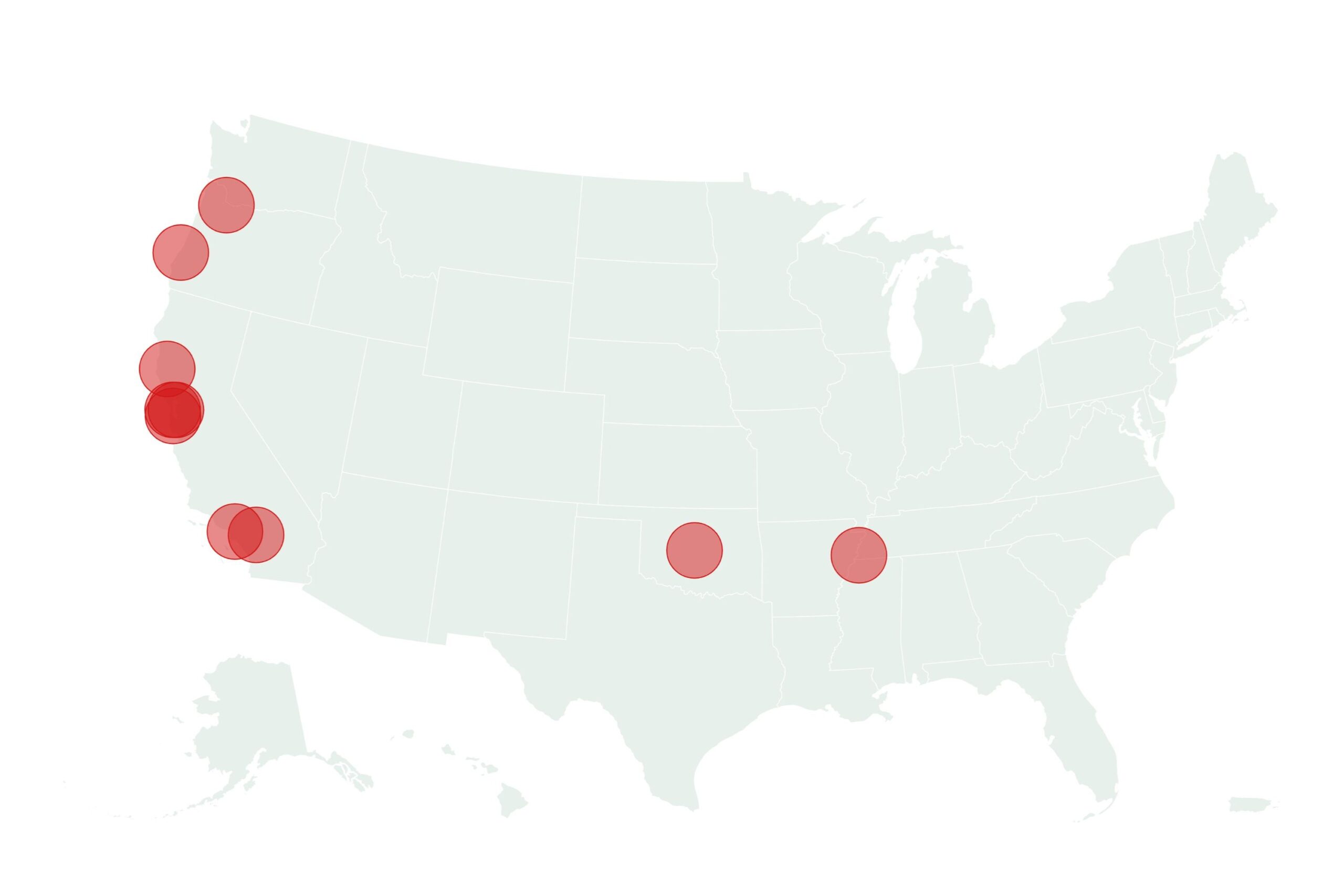
A recent study by Home Gnome, a marketplace for all home services, has highlighted the locations in the United States that are most vulnerable to earthquakes, combining seismic hazard data with population and property impact metrics.
Why It Matters
Historic earthquakes have caused billions of dollars in damage, with significant seismic events presenting a hazard to both life and property.
A 2023 report released by the U.S. Geological Survey (USGS) and the Federal Emergency Management Agency (FEMA) found that earthquakes cost the country roughly $14.7 billion in building damage and associated loss annually.
What To Know
Unsurprisingly, California tops the list, with San Francisco County ranked number 1 and Los Angeles County ranked second. Each county is home to a major city that bears the same name.
Alameda County, Mendocino County, San Bernadino County, and San Mateo County are all featured in the top 10, at fifth, seventh, ninth, and 10th respectively.
The largest cities in each respectively are Oakland, Ukiah, San Bernadino, and San Mateo.
The Golden State also dominated the list in general, with 35 of its 48 included counties featuring in the top half of the rankings.
The counties in the top 10 were as follows:
- San Francisco County
- Los Angeles County
- Coos County, Oregon
- Shelby County, Tennessee
- Alameda County, California
- Multnomah County, Oregon
- Mendocino County, California
- Oklahoma County, Oklahoma
- San Bernadino County, California
- San Mateo County, California
Many of the more vulnerable counties were located along major fault lines, such as King County in Washington, home to Seattle and which sits atop the Seattle Fault. It was given a ranking of 24.
The fourth-most vulnerable county on the list, Shelby County in Tennessee, is located near the New Madrid Seismic Zone and is home to Memphis.
The study ranked the 206 most earthquake-vulnerable U.S. counties by first identifying key metrics, grouped into three main categories: Earthquake & Infrastructure Risk, Financial & Emergency Preparedness, and Demographic Vulnerability.
Each factor within these categories was assigned a weight based on its significance. Data for each factor was collected from reliable sources for all counties deemed high or very high risk by FEMA. Counties were then scored out of 100 for each factor, with an overall score calculated by averaging scores across all categories.
What People Are Saying
Christodoulos Kyriakopoulos, assistant professor at the University of Memphis’ Center for Earthquake Research and Information told Newsweek: “…seismic vulnerability is the tendency of a system (e.g., building, bridge etc.) to sustain damage (or fail) for a given earthquake of a given magnitude.
“It considers factors such as the quality of engineering design/construction, local geology (site amplification effects), quality of construction materials, if and how well the seismic code is followed any given region.”
Associate professor of geology at the University of California, Riverside, Nicolas Barth told Newsweek: “Shelby County scores quite high due to the danger posed by the New Madrid Seismic Zone and the population of Memphis (and probably lack of earthquake-engineered infrastructure), with other nearby areas making the list for the same fault zone risk.”
What Happens Next?
Recently, experts spoke with Newsweek to explain the rise in earthquakes across Southern California as of late.
Seismologists grow concerned when small quakes cluster near major faults, as they can signal a larger event—but often, they don’t, Mark Benthien of the Southern California Earthquake Center said.
“We’ll need to see if this new level continues in 2025 and 2026 to judge if this longer-term average is now also a short-term average. If not, then the notion of earthquakes being ‘on the rise’ might change to ‘reached a higher level in 2024.'”
